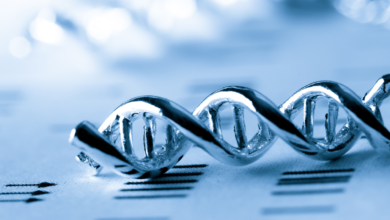Genetic Testing for Infertility

What is Genetic Testing for Infertility?
Genetic testing for infertility is a medical procedure used to identify genetic factors that may be contributing to a couple’s difficulty conceiving. It involves analyzing the DNA of both partners to look for specific genetic variations that can affect fertility.
Why Genetic Testing for Infertility is required?
Genetic testing for infertility can be helpful in:
- Identifying underlying causes: It can pinpoint genetic factors that may be contributing to infertility, such as chromosomal abnormalities, genetic mutations, or hormonal imbalances.
- Providing treatment options: Once the underlying genetic causes are identified, targeted treatments or assisted reproductive technologies (ART) can be recommended.
- Understanding future risks: Genetic testing can help couples understand the risk of passing on genetic conditions to their children.
- Making informed decisions: The results of genetic testing can help couples make informed decisions about their family planning.
Which are the method of Genetic Testing for Infertility?
· Karyotyping: This involves analyzing the chromosomes in a blood sample to detect chromosomal abnormalities.
· Gene sequencing: This involves analyzing the DNA sequence to identify specific genetic mutations.
· Hormone testing: This involves measuring hormone levels in the blood to assess hormonal imbalances.
Who should go for Genetic Testing for Infertility?
Couples who have been trying to conceive for a year or more without success may consider genetic testing for infertility. It is particularly recommended for:
- Couples with a history of recurrent miscarriages
- Couples with a family history of infertility or genetic disorders
- Individuals with known genetic conditions that can affect fertility
- Couples undergoing assisted reproductive technologies (ART)
What are the results of Genetic Testing for Infertility?
The results of genetic testing for infertility can vary depending on the specific tests performed. Possible outcomes include:
- Normal results: No genetic factors contributing to infertility are identified.
- Chromosomal abnormalities: These can include conditions such as Turner syndrome, Klinefelter syndrome, or deletions or duplications of specific chromosomes.
- Genetic mutations: These can affect the production or function of hormones or proteins involved in fertility.
- Hormonal imbalances: This can indicate a problem with the pituitary gland or other hormone-producing organs.
What are the components of Genetic Testing for Infertility?
The specific components of genetic testing for infertility will vary depending on the individual case. However, it may include:
- Blood tests: To analyze chromosomes and hormone levels
- Saliva samples: For DNA analysis
- Medical history review: To assess family history and previous fertility treatments
- Physical examination: To evaluate reproductive organs and identify any abnormalities





